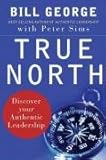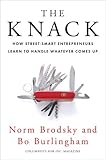 It’s all about perceptions. You can view that horrible mistake you made last week as a horrible mistake that will scar you forever. Or you can view it as a learning opportunity. A teachable moment, in presidential parlance.
It’s all about perceptions. You can view that horrible mistake you made last week as a horrible mistake that will scar you forever. Or you can view it as a learning opportunity. A teachable moment, in presidential parlance.
As a manager, it is your job to remove the roadblocks that hinder your team’s path. Even if the roadblock is themselves, such as fear, anger, confusion, frustration, misunderstanding, or a mistake. A roadblock such as missing information is easy to resolve. Just get them the information they require. A roadblock such as fear is harder because you’re dealing with a psychological issue.
So how do you deal with such an issue? Reframing.
Reframing is an extremely powerful technique. It involves changing one’s perception of a particular situation from a negative, disabling one to a positive, enabling one. For instance, a mistake is really a teachable moment. Something you fear is really a chance to overcome that fear. Someone who’s angered you is really a chance to better understand that person.
Let’s take a more concrete example.
You are John’s manager. John has been working with the manager of another team for weeks now. The other manager, Bill, has been micromanaging him, despite not being John’s direct supervisor. It is known amongst the department that Bill is a micromanager, as he does this to his own team too. It usually doesn’t effect you and your team, but on this project, John needs to deal with Bill and thus encounters his micromanaging style.
You’ve spoken to Bill several times about this. After each talk, he eases up a bit on John. But after a few days, he’s back to his old ways.
What can you do about this?
- Keep on talking to Bill and reminding him about his behavior every few days. This would be time-consuming, however.
- Talk to Bill’s boss. Recommend that Bill be sent to a management class. If he’s on a critical project, he may not be able to go, even for a few days. Or his boss may not agree with your suggestion.
- Get Bill off the team. Talk to his boss and the overall supervisor of the project. Recommend that Bill be replaced. That may be a long & ardorous process, depending upon the politics involved and the policies of your company.
- Talk to John and reframe the situation for him. First, talk to Bill and find out why he’s micromanaging. Get to the fundamental psychological issue. Perhaps he’s a new manager and is very nervous about his job. Explain this to John and help him to understand Bill’s point of view. Since Bill is insecure, he wants lots of communication. Work with John to come up with some low-impact processes that give Bill all the information he wants. Perhaps a daily status report or issue-tracking tool will assuage his insecurities.
- Talk to Bill and reframe the situation for him. Understand his point of view, world view, and motivations. Relate to him how his micromanagement style is effecting the team. Offer alternatives, such as daily stand-up status meetings, issue-tracking tools, or other project management techniques. You could even suggest management training or self-help books to Bill directly.
I’ve been in this situation before. My approach was both options four and five. I talked to both John and Bill to help them reframe their behaviors and perceptions. In my scenario, we set up daily stand-up status meetings. This gave Bill all the information he needed to feel comfortable and got him off of John’s back. As a result, John was much happier and more productive.
The downside was requiring a fair bit of upfront time from my busy schedule, especially on the part of Bill. I had to talk to him several times in a supportive, non-threatening manner. I related to him my struggles as a new manager and how I dealt with a perceived lack of communication and control, then helped Bill with solutions.
For John’s part, he had believed that Bill didn’t like him. He didn’t realize that Bill was insecure in his role and simply wanted more information, which he was glad to provide. Understanding Bill’s point of view also encouraged John to provide more details in his status reports.
I essentially reframed the situation for both John and Bill. I helped them both understand the other’s point of view, then worked with them to set up solutions.
Reframing is a powerful technique that can be used by managers to enable their teams to become more effective. It is the art of changing one’s perception of a particular situation from a negative one to a positive one. I was able to use it to make the lives of John and Bill easier. Hopefully it can help you on your projects as well.
Photo by: Sundials by Carmichael






